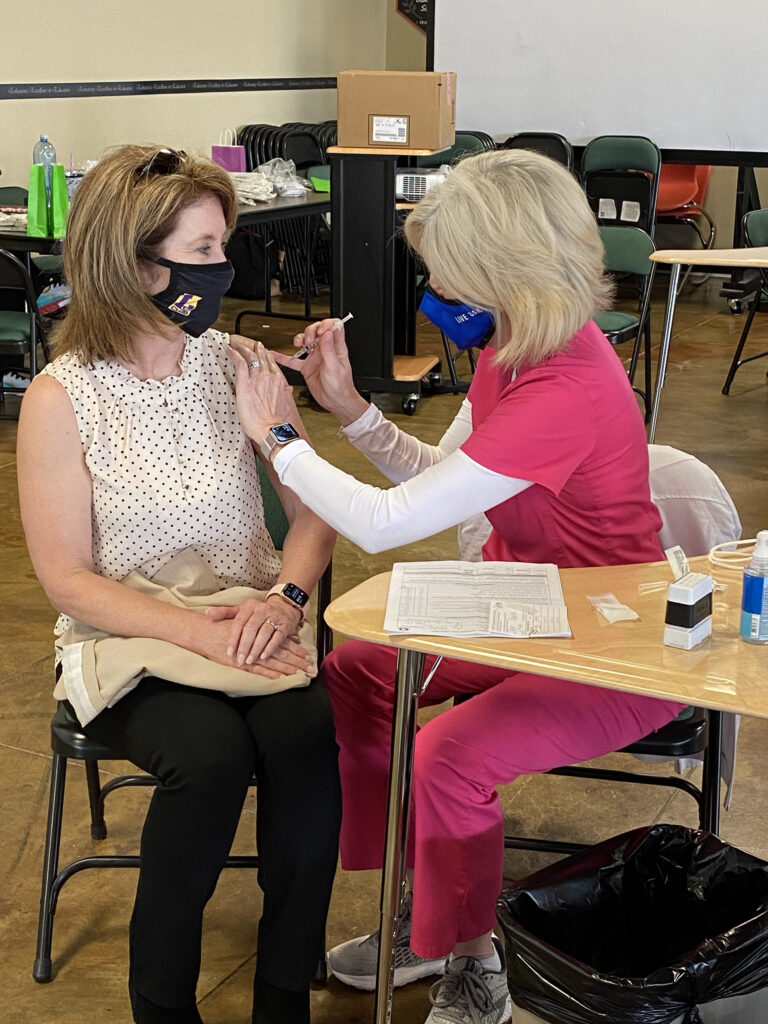ELEMENTARY VIRTUAL PROGRAM OFFERED FOR 2021-2022 SCHOOL YEAR
 Livingston Parish Public Schools is offering a hybrid virtual learning option for students in grades 3, 4 and 5 who may benefit from partial online instruction for the 2021-2022 school year. Applications are now being accepted.
Livingston Parish Public Schools is offering a hybrid virtual learning option for students in grades 3, 4 and 5 who may benefit from partial online instruction for the 2021-2022 school year. Applications are now being accepted.
The program will be an expansion of the district’s current 100 percent virtual program that opened to qualified students in grades 6-12 last school year. The district’s virtual programs are not social distance learning options in response to the COVID pandemic. Any distance learning provisions that might be required in response to lingering health concerns for the new school year would be handled outside of this new format in accordance with state health guidelines.
“Much like our virtual program for students in grades 6-12, LPLTC Virtual 3-5 was developed from requests for alternative learning options and based on extensive research of best practices specific to the needs of grades 3-5,” Superintendent Joe Murphy said.
While the virtual program for the students in grades 6-12 is 100 percent virtual with face-to-face tutoring options, this new program will be a hybrid. Students will receive virtual instruction three days a week, and they will attend the Literacy and Technology Center campus two days a week, for three to four hours each day, to have face-to-face contact with a teacher and other students.
“Our research has determined even those students who can excel in a virtual environment still need social interaction and face-to-face reassurance in the process,” said Kim Albin, principal of the Livingston Parish Literacy and Technology Center and the Elementary Virtual Program.
LIVINGSTON PARISH SCHOOLS TO RECEIVE $50 MILLION IN FEDERAL STIMULUS FUNDING
 Livingston Parish Public Schools will receive approximately $50 million dollars through the Elementary and Secondary School Emergency Relief (ESSER) Fund to be spent in designated priority areas over the next three years.
Livingston Parish Public Schools will receive approximately $50 million dollars through the Elementary and Secondary School Emergency Relief (ESSER) Fund to be spent in designated priority areas over the next three years.
ESSER funds were awarded to state educational agencies across the nation earlier this year to address the impact that COVID-19 has had, and continue to have, on elementary and secondary schools. The Louisiana Department of Education received $1.2 billion, adding to $287 million the state department received in the spring of 2020 through the CARES Act. LDOE, in turn, established spending priorities and guidelines for distributing those funds to individual school districts and charter schools across the state.
“The state has lined out five priorities area, which mirror the state’s critical goals, that will direct our efforts as we work towards achieving our prioritized goals,” Superintendent Joe Murphy said. “This funding allows us to meet many of the critical needs that were exposed during the most challenging days of the pandemic. At the same time, it will help us strengthen our learning opportunities in this new environment.”
Murphy noted that funds would not be earmarked for recurring expenses, since they would exhaust by September 2024.
DISTRICT TO HIRE MORE SCHOOL NURSES

Livingston Parish School Nurse Karen Kemp, right, administers the COVID vaccine to Delia Taylor during the district’s vaccination drive earlier this year. The district is hiring more school nurses to meet the increased demand for healthcare professionals on school campuses across the parish.
The Livingston Parish School Board recently approved a proposal to hire 17 new licensed practical nurses for the 2021-2022 school year, effectively enlarging the district’s school nurse pool to have one for every elementary campus.
Livingston Parish Public Schools currently has 28 fulltime school nurse positions, including 17 registered nurses who serve multiple campuses. In addition to servicing students at multiple campuses, the registered nurses supervise the LPNs on staff. The new hires will increase the district’s total count to 49 school nurses.
School Nurse Coordinator Jennifer Wilkinson said the district’s need for on-campus medical staff has increased greatly over the past year due to COVID-19 guidelines. At the same time, medical needs of students in general have increased considerably over the years, as more students have identified special needs that require greater care from licensed professionals rather than unlicensed staff or paraprofessionals.
